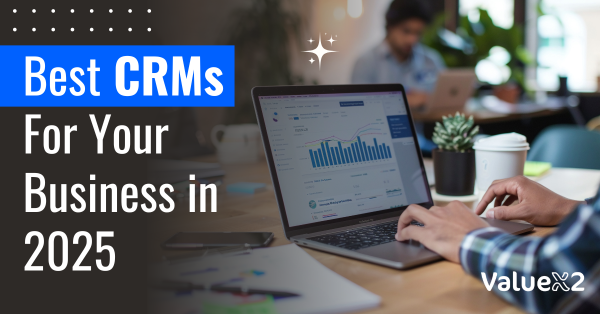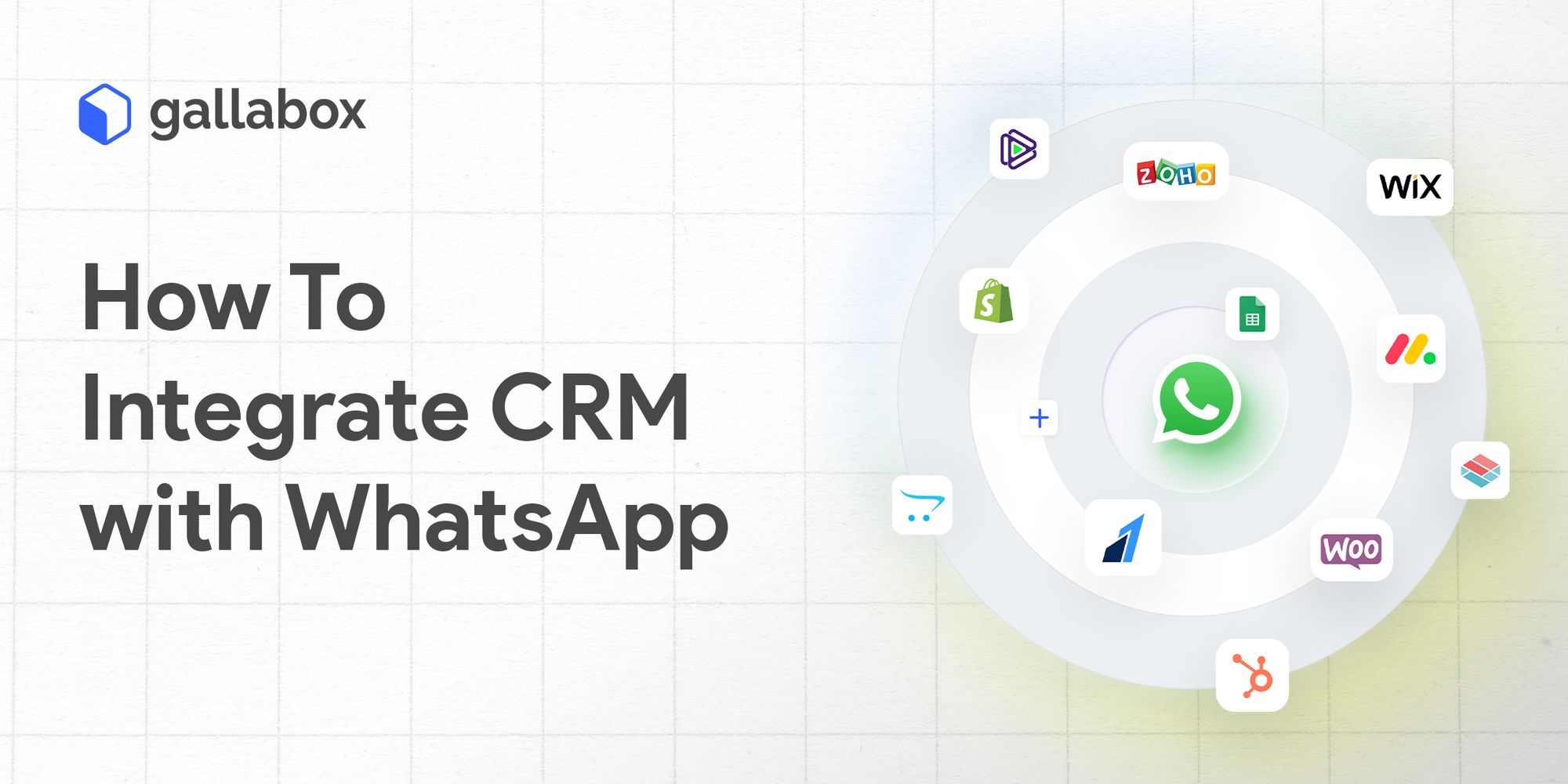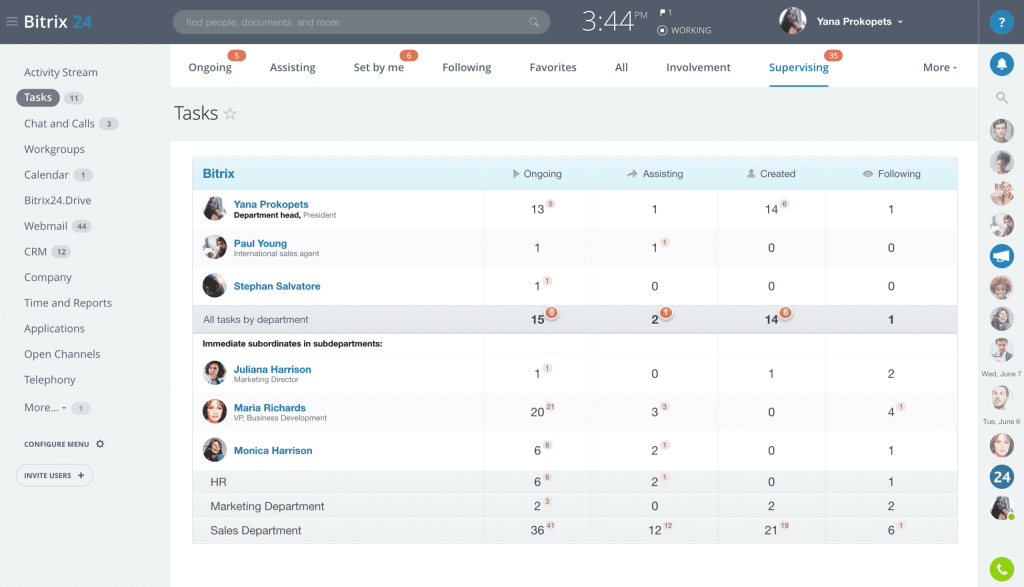
Small Business CRM Basics in 2025: Your Ultimate Guide to Growth
Navigating the world of Customer Relationship Management (CRM) can feel overwhelming, especially for small businesses. But in 2025, it’s not just a nice-to-have; it’s a necessity. This guide breaks down the CRM basics, providing a roadmap for small businesses to thrive and build lasting customer relationships. We’ll cover everything from what a CRM is, why you need one, and how to choose the right CRM for your business in 2025.
What is a CRM? Demystifying Customer Relationship Management
Let’s start with the basics. CRM stands for Customer Relationship Management. At its core, a CRM system is a technology that helps businesses manage and analyze customer interactions and data throughout the customer lifecycle. It’s more than just a contact list; it’s a centralized hub for all customer-related information. Think of it as the brain of your customer interactions.
In 2025, CRM systems have evolved far beyond simple contact management. They now offer a comprehensive suite of tools designed to streamline sales, marketing, and customer service processes. This includes features like:
- Contact Management: Storing and organizing customer data, including contact details, purchase history, and communication logs.
- Sales Automation: Automating repetitive sales tasks, such as lead nurturing, email follow-ups, and quote generation.
- Marketing Automation: Automating marketing campaigns, segmenting audiences, and tracking campaign performance.
- Customer Service: Managing customer inquiries, resolving issues, and providing personalized support.
- Analytics and Reporting: Providing insights into customer behavior, sales performance, and marketing effectiveness.
The primary goal of a CRM is to improve business relationships. By understanding your customers better, you can personalize your interactions, offer tailored products and services, and ultimately increase customer satisfaction and loyalty. It’s about building genuine connections, not just transactions.
Why Your Small Business Needs a CRM in 2025
In today’s competitive landscape, small businesses need every advantage they can get. A CRM system offers several key benefits that can significantly impact your bottom line:
1. Enhanced Customer Relationships
At the heart of any successful business is a strong relationship with its customers. A CRM allows you to:
- Personalize Interactions: Accessing customer data at your fingertips allows you to tailor your communication and offers.
- Improve Customer Service: Quickly access customer history and resolve issues efficiently.
- Build Loyalty: Demonstrate that you value your customers by providing personalized experiences.
2. Increased Sales and Revenue
A CRM can directly contribute to increased sales by:
- Improving Lead Management: Tracking and nurturing leads through the sales pipeline.
- Automating Sales Processes: Freeing up your sales team to focus on closing deals.
- Identifying Upselling and Cross-selling Opportunities: Recommending relevant products or services based on customer history.
3. Improved Efficiency and Productivity
By automating tasks and centralizing data, a CRM can dramatically improve your team’s productivity. For instance:
- Automated Tasks: Automate repetitive tasks such as data entry or follow-up emails.
- Streamlined Processes: Simplify sales, marketing, and customer service workflows.
- Reduced Manual Errors: Centralized data reduces the risk of errors and inconsistencies.
4. Data-Driven Decision Making
A CRM provides valuable insights into your business performance, allowing you to make informed decisions. This includes:
- Sales Performance Tracking: Monitoring sales metrics, such as revenue, conversion rates, and deal velocity.
- Marketing Campaign Analysis: Tracking the effectiveness of your marketing campaigns.
- Customer Behavior Analysis: Understanding customer preferences and buying patterns.
5. Scalability and Growth
As your business grows, a CRM can scale with you. It allows you to:
- Manage Growing Customer Base: Efficiently manage an increasing number of customers.
- Expand Sales and Marketing Efforts: Support expanded sales and marketing activities.
- Maintain Customer Satisfaction: Ensure consistent customer experiences as your business grows.
Key Features to Look for in a Small Business CRM in 2025
Choosing the right CRM for your small business is crucial. Here are some key features to consider in 2025:
1. Contact Management
This is the foundation of any CRM. Ensure the system allows you to:
- Store comprehensive customer data (contact details, demographics, etc.).
- Segment and categorize contacts.
- Import and export data easily.
2. Sales Automation
Sales automation can significantly boost your team’s efficiency. Look for features such as:
- Lead management and scoring.
- Automated email sequences.
- Workflow automation for tasks and processes.
3. Marketing Automation
Effective marketing automation can help you nurture leads and drive conversions. Key features include:
- Email marketing capabilities.
- Campaign management and tracking.
- Lead nurturing workflows.
4. Customer Service Tools
Providing excellent customer service is paramount. Look for features like:
- Ticket management.
- Live chat integration.
- Knowledge base and self-service portals.
5. Reporting and Analytics
Data-driven insights are essential for making informed decisions. Ensure the CRM offers:
- Customizable dashboards.
- Detailed reports on key metrics.
- Data visualization tools.
6. Integrations
Integration with other business tools is critical. Consider these integrations:
- Email marketing platforms (e.g., Mailchimp, Constant Contact).
- Social media platforms.
- Accounting software (e.g., QuickBooks, Xero).
7. Mobile Accessibility
In 2025, mobility is key. Ensure the CRM offers:
- Mobile apps for iOS and Android.
- Responsive design for mobile devices.
- Offline access to data.
8. User-Friendliness
A CRM should be easy to use and navigate. Look for:
- Intuitive interface.
- Easy setup and configuration.
- Comprehensive training and support resources.
Choosing the Right CRM for Your Small Business in 2025
With so many CRM options available, choosing the right one can feel daunting. Here’s a step-by-step approach to help you find the perfect fit:
1. Define Your Needs and Goals
Before you start evaluating CRM systems, take the time to define your specific needs and goals. Ask yourself:
- What are your primary business objectives? (e.g., increase sales, improve customer service).
- What are your pain points? (e.g., difficulty managing leads, inefficient communication).
- What features are essential for your business?
- What is your budget?
2. Research CRM Vendors
Once you know your needs, research the available CRM options. Consider:
- Popular CRM Platforms: Explore options like HubSpot CRM, Salesforce Sales Cloud, Zoho CRM, Pipedrive, and Freshsales.
- Reviews and Ratings: Read reviews from other small businesses to understand their experiences.
- Pricing and Plans: Compare pricing plans and features to find the best value for your budget.
3. Evaluate Features and Functionality
Compare the features of each CRM system against your defined needs. Pay close attention to:
- Contact Management: Does it offer robust contact management capabilities?
- Sales Automation: Does it streamline your sales processes?
- Marketing Automation: Does it support your marketing efforts?
- Customer Service: Does it improve customer service?
- Integrations: Does it integrate with your existing tools?
4. Consider Scalability
Choose a CRM that can grow with your business. Consider:
- Scalability of Features: Can the CRM handle your increasing customer base and data volume?
- Customization Options: Can you customize the CRM to meet your evolving needs?
- Integration Capabilities: Can the CRM integrate with new tools and platforms as your business grows?
5. Test and Evaluate
Before making a final decision, test the CRM. Consider:
- Free Trials: Take advantage of free trials to test the CRM.
- Demo Videos: Watch demo videos to learn about the features.
- Ask for a Demo: Request a live demo from the vendor.
6. Consider Pricing and Support
CRM pricing models vary. Evaluate:
- Pricing Plans: Consider the different pricing plans and choose the one that fits your budget and needs.
- Implementation Costs: Factor in any implementation costs, such as training or customization.
- Customer Support: Evaluate the vendor’s customer support options.
7. Implementation and Training
Once you’ve chosen a CRM, you’ll need to implement it and train your team. Consider:
- Implementation Support: Does the vendor provide implementation support?
- Training Resources: Are there training resources available?
- User Adoption: Ensure your team is trained and comfortable using the CRM.
8. Ongoing Monitoring and Optimization
CRM is not a set-it-and-forget-it tool. Continuously monitor and optimize your CRM usage. Consider:
- Data Analysis: Regularly analyze your CRM data to identify areas for improvement.
- User Feedback: Gather feedback from your team on their experience with the CRM.
- Regular Updates: Stay up-to-date with the latest features and updates.
Top CRM Systems for Small Businesses in 2025
The CRM landscape is constantly evolving. Here are some of the top CRM systems for small businesses in 2025, based on their features, pricing, and user reviews:
1. HubSpot CRM
HubSpot CRM is a popular choice for small businesses due to its user-friendliness and free version. It offers a comprehensive suite of tools for sales, marketing, and customer service.
- Pros: Free version, ease of use, comprehensive features.
- Cons: Limited features in the free version, can be expensive for advanced features.
2. Zoho CRM
Zoho CRM is a versatile and affordable option for small businesses. It offers a wide range of features, including sales automation, marketing automation, and customer service tools.
- Pros: Affordable, customizable, comprehensive features.
- Cons: Interface can be overwhelming for some users, some features require add-ons.
3. Pipedrive
Pipedrive is a sales-focused CRM that’s designed to help sales teams manage their pipelines and close deals. It’s known for its intuitive interface and focus on sales automation.
- Pros: Intuitive interface, excellent sales pipeline management, strong sales automation features.
- Cons: Less emphasis on marketing automation, limited customer service features.
4. Freshsales
Freshsales is a modern CRM with a focus on usability and ease of use. It offers a range of features, including sales automation, lead management, and communication tools.
- Pros: User-friendly interface, strong sales automation features, affordable pricing.
- Cons: Limited integrations compared to other CRM systems.
5. Salesforce Sales Cloud
Salesforce Sales Cloud is a powerful and customizable CRM system that is ideal for growing businesses. It offers a wide range of features and integrations, but it can be more complex and expensive than other options.
- Pros: Highly customizable, extensive features, strong integrations.
- Cons: Complex interface, can be expensive, requires training.
CRM Best Practices for Small Businesses in 2025
Implementing a CRM is just the first step. To maximize its benefits, follow these best practices:
1. Define Your CRM Strategy
Before you implement a CRM, define your CRM strategy. This includes:
- Setting Clear Goals: Define what you want to achieve with the CRM.
- Identifying Key Metrics: Determine the metrics you will use to measure success.
- Developing a Plan: Create a plan for implementing and using the CRM.
2. Data Hygiene and Accuracy
Ensure your data is clean and accurate. This includes:
- Data Entry Standards: Establish standards for data entry.
- Data Validation: Validate data to ensure accuracy.
- Regular Data Cleansing: Regularly clean and update your data.
3. User Training and Adoption
Train your team on how to use the CRM effectively. This includes:
- Comprehensive Training: Provide comprehensive training on all features.
- Ongoing Support: Provide ongoing support and assistance.
- Encourage User Adoption: Encourage your team to use the CRM consistently.
4. Automation and Workflow Optimization
Automate repetitive tasks and optimize your workflows. This includes:
- Automating Sales Processes: Automate tasks such as lead nurturing and email follow-ups.
- Automating Marketing Campaigns: Automate marketing campaigns and lead nurturing.
- Optimizing Workflows: Optimize your workflows to improve efficiency.
5. Integration and Customization
Integrate your CRM with other business tools and customize it to meet your specific needs. This includes:
- Integrating with Other Tools: Integrate your CRM with other tools such as email marketing platforms and accounting software.
- Customizing Fields and Workflows: Customize the CRM to meet your specific needs.
- Regularly Review and Update: Regularly review and update your integrations and customizations.
6. Reporting and Analysis
Regularly analyze your CRM data to gain insights into your business performance. This includes:
- Generating Reports: Generate reports on key metrics.
- Analyzing Data: Analyze your data to identify trends and insights.
- Making Data-Driven Decisions: Use your data to make informed decisions.
7. Security and Compliance
Ensure your CRM is secure and compliant with relevant regulations. This includes:
- Data Security Measures: Implement data security measures to protect your data.
- Compliance with Regulations: Ensure your CRM complies with relevant regulations such as GDPR and CCPA.
- Regular Security Audits: Conduct regular security audits to identify and address vulnerabilities.
The Future of CRM for Small Businesses: Trends to Watch in 2025
The CRM landscape is constantly evolving, and several trends are shaping the future of CRM for small businesses. Staying ahead of these trends can give your business a competitive edge.
1. Artificial Intelligence (AI) and Machine Learning (ML)
AI and ML are transforming CRM systems, enabling businesses to:
- Predict Customer Behavior: AI can analyze customer data to predict future behavior, such as churn risk and purchase likelihood.
- Automate Tasks: ML can automate repetitive tasks, such as data entry and email responses.
- Personalize Customer Experiences: AI can personalize customer experiences by tailoring offers and recommendations.
2. Enhanced Personalization
Customers expect personalized experiences. CRM systems will increasingly focus on:
- Hyper-Personalization: Tailoring interactions to individual customer preferences and needs.
- Personalized Content: Delivering personalized content through email, websites, and other channels.
- Real-Time Personalization: Personalizing interactions in real-time based on customer behavior.
3. Omnichannel Customer Experience
Customers interact with businesses across multiple channels. CRM systems will need to:
- Integrate All Channels: Seamlessly integrate all communication channels, such as email, phone, chat, and social media.
- Provide a Unified View: Provide a unified view of the customer across all channels.
- Deliver Consistent Experiences: Deliver consistent customer experiences across all channels.
4. Mobile-First Approach
Mobile devices are increasingly important. CRM systems will need to:
- Prioritize Mobile Accessibility: Offer mobile-first designs and mobile apps.
- Optimize for Mobile Usage: Optimize the CRM for mobile usage.
- Provide Offline Access: Provide offline access to data.
5. Focus on Data Privacy and Security
Data privacy and security are increasingly important. CRM systems will need to:
- Prioritize Data Security: Implement robust data security measures.
- Comply with Regulations: Comply with data privacy regulations such as GDPR and CCPA.
- Provide Transparency: Provide transparency about data collection and usage.
6. Integration with Emerging Technologies
CRM systems will integrate with emerging technologies, such as:
- Voice Assistants: Integrate with voice assistants like Alexa and Google Assistant.
- Internet of Things (IoT): Integrate with IoT devices to collect customer data.
- Blockchain: Use blockchain technology for data security and transparency.
Conclusion: Embrace CRM for Small Business Success in 2025
In 2025, a CRM system is no longer optional for small businesses. It’s an essential tool for building strong customer relationships, driving sales, and achieving sustainable growth. By understanding the basics, choosing the right system, and following best practices, your small business can harness the power of CRM to thrive in a competitive market. Embrace CRM, and position your business for success in 2025 and beyond.

